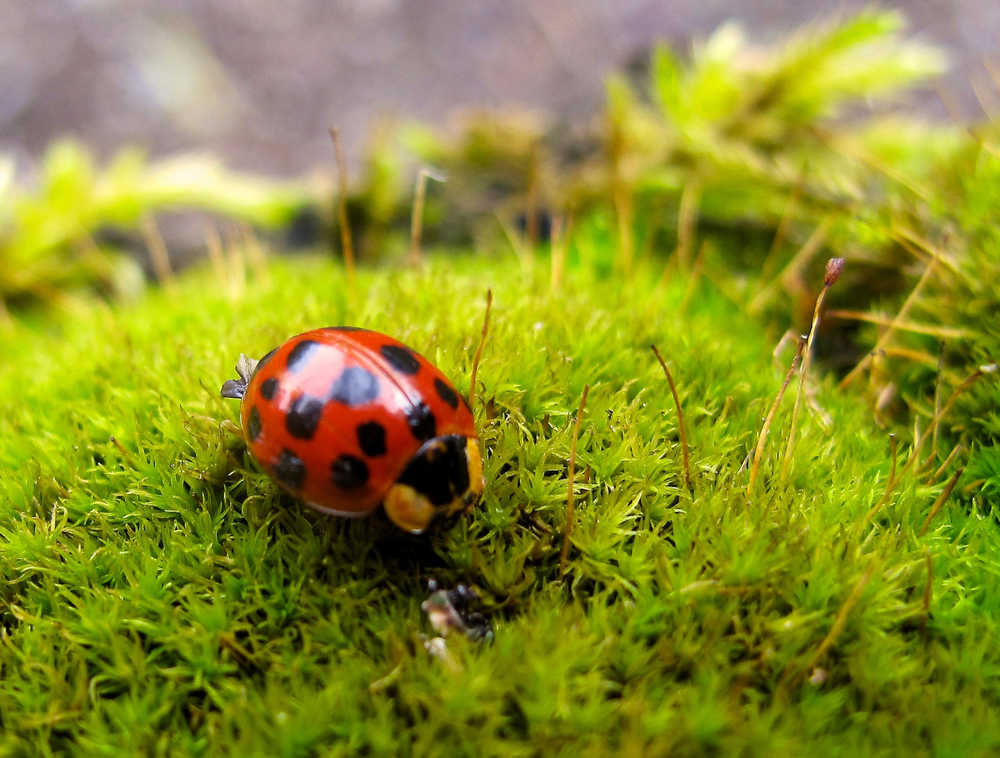Gardeners worried about the safety of synthetic pest-control products sometimes turn to botanically derived compounds instead. But many of those also contain toxic ingredients, such as nicotine, rotenone and pyrethrins.
“Botanically derived pesticides are not always safe and some are more hazardous than synthetics,” said Linda Chalker-Scott, an extension horticulturist at Washington State University’s Puyallup Research Center. “Any improperly used pesticide will contaminate nearby terrestrial and aquatic systems.”
And don’t use home remedies, she said, which could be “illegal and possibly fatal to many good things in your garden.”
Instead, consider the benign-neglect school of pest-control — a mix of prevention (such as maintaining healthy soil) and natural controls (such as insect-eating insects).
“I don’t add fertilizers. I don’t use pesticides. I use a wood chip mulch, which provides habitat for beneficial insects like predacious ground beetles that may eat slugs and slug eggs,” Chalker-Scott said in an email.
Ninety-nine percent of the insects in our yards are benign or even beneficial, writes Jessica Walliser in her new “Attracting Beneficial Bugs to Your Garden: A Natural Approach to Pest Control” (Timber Press). She recommends introducing insects that eat other insects.
“A single ladybug — probably the most illustrious beneficial predatory insect — can consume up to 5,000 aphids during its lifetime,” Walliser says, adding that there are thousands of other insect species capable of doing the same thing.
To keep these predatory insects around, however, you have to offer a diverse and pesticide-free garden with plenty of plant-based foods.
“Just like people, most species of beneficial insects need a balance of carbohydrates (found in nectar) and protein (found in their prey) in order to survive,” Walliser said.
Provide plants that produce flowers with shallow, exposed nectaries, she said. “Many beneficial insects are very small and don’t have specialized mouthparts for accessing nectar from tubular flowers. Members of the carrot family and the aster family are great places to start.”
Where to find beneficial insects? Aside from luring wild singles into your yard with the necessary food, water and shelter, you can simply buy several hundred for release from containers at garden centers or on the Internet.
“Be sure you have everything they need to survive, then look at the types of pests you have in the garden,” Walliser said. “If whiteflies are problematic on your tomatoes, then larval lacewings may be your answer. If aphids are plaguing your lettuce crop, ladybugs may be a better choice.”
Prevention, though, is probably the best way to keep problem insects away, said Christy Wilhelmi, a garden designer from Los Angeles and author of “Gardening for Geeks” (Adams Media, 2013).
“If you have healthy soils, you won’t have as many pests and you won’t need to use pesticides,” she said. “Avoid (plant) stresses. Have soil with a lot of organic matter in it. Check your garden every day and you won’t need pest control.”
Online:
For more about beneficial insects, see this University of Alaska Fairbanks Cooperative Extension Service publication: http://www.uaf.edu/files/ces/publications-db/catalog/anr/PMC-10075.pdf.

